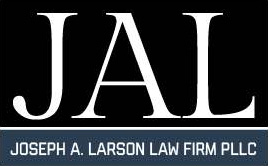A story about a lawsuit filed in Kentucky by the American Civil Liberties Union on behalf of two children with disabilities who were restrained by a police office in the classroom broke this morning. (Here’s the link: http://www.nbcnews.com/news/us-news/young-disabled-students-shackled-misbehaving-lawsuit-claims-n403421?cid=sm_fb.) One of the claims filed on the students’ behalf was a claim against the offending officers in their official and individual capacities under 42 U.S.C. § 1983 (“Section 1983”), which holds individuals liable under federal law for violating a plaintiff’s Constitutional or statutorily-protected rights. While these claims are most commonly made against police officers whose conduct breaches rights protected by the Fourth and Fifth Amendments, Section 1983 claims are also viable in sexual harassment and discrimination claims made under Title VII against those acting under authority provided by the state.
The actual language of Section 1983 states:
Every person who, under color of any statute, ordinance, regulation, custom, or usage, of any State or Territory or the District of Columbia, subjects, or causes to be subjected, any citizen of the United States or other person within the jurisdiction thereof to the deprivation of any rights, privileges, or immunities secured by the Constitution and laws, shall be liable to the party injured in an action at law, suit in equity, or other proper proceeding for redress[.]
More succinctly put, Section 1983 imposes liability for certain actions taken under color of law that deprive a person of a right secured by the Constitution and laws of the United States. The U.S. Supreme Court put it another way: “To state a claim under [Section] 1983, a plaintiff must allege the violation of a right secured by the Constitution and laws of the United States, and must show that the alleged deprivation was committed by a person acting under color of state law.” West v. Atkins, 487 U.S. 42, 48, 108 S.Ct. 2250 (1988).
In analyzing a Section 1983 claim, there are two threshold issues. First, is whether the Plaintiff’s allegations establish a violation of the Constitution. If there is no violation, then no further inquiry is needed and a Section 1983 claim will not stand. If there is a constitutional violation, the second question is whether it was clearly established at the time of the violation such that a reasonable person would have known that his actions violated a constitutional right. In other words, the constitutional or statutory violation must be something a reasonable person acting with state authority should have been aware of, i.e. an arrestee’s right against unlawful searches and seizures or a government employee’s right to be free from sexual harassment in the workplace.
In the context of bringing a Section 1983 stemming from sexual harassment or gender discrimination, the Eighth Circuit has stated, “A number of our prior decisions have stated, albeit with little or no analysis, that ‘[s]exual harassment by state actors violate[s] the Fourteenth Amendment and establishes a [S]ection 1983 action.’” Cox v. Sugg, 484 F.3d 1062, 1066 (2007). Those prior decisions typically identify the Equal Protection Clause as the relevant constitutional provision. Based on that analysis, a court can assume that a plaintiff has presented sufficient evidence that the state actor committed a Constitutional violation by virtue of the plaintiff being sexually harassed. More succinctly put, the Eighth Circuit in Ottman v. City of Independence stated, “We have held intentional gender discrimination in public employment by persons acting under color of state law violates the Equal Protection Clause of the Fourteenth Amendment and is actionable under section 1983.” 341 F.3d 751, 756 (8th Cir. 2003).
So, while Section 1983 is there to protect people from constitutional violations made by police officers during the course of their job, Section 1983 also protects people from other constitutional and statutory protections – like sexual harassment or gender discrimination – when those violations are committed by state actors with authority granted by the state. Two examples are students at public institutions and government employees who are subjected to sexual harassment from teachers or co-workers employed by the state. Those students or government employees can hold those individuals responsible for the violation liable by making a Section 1983 claim against them, just as they would make a Title VII or Title IX claim against their employer or university for a hostile work environment.

